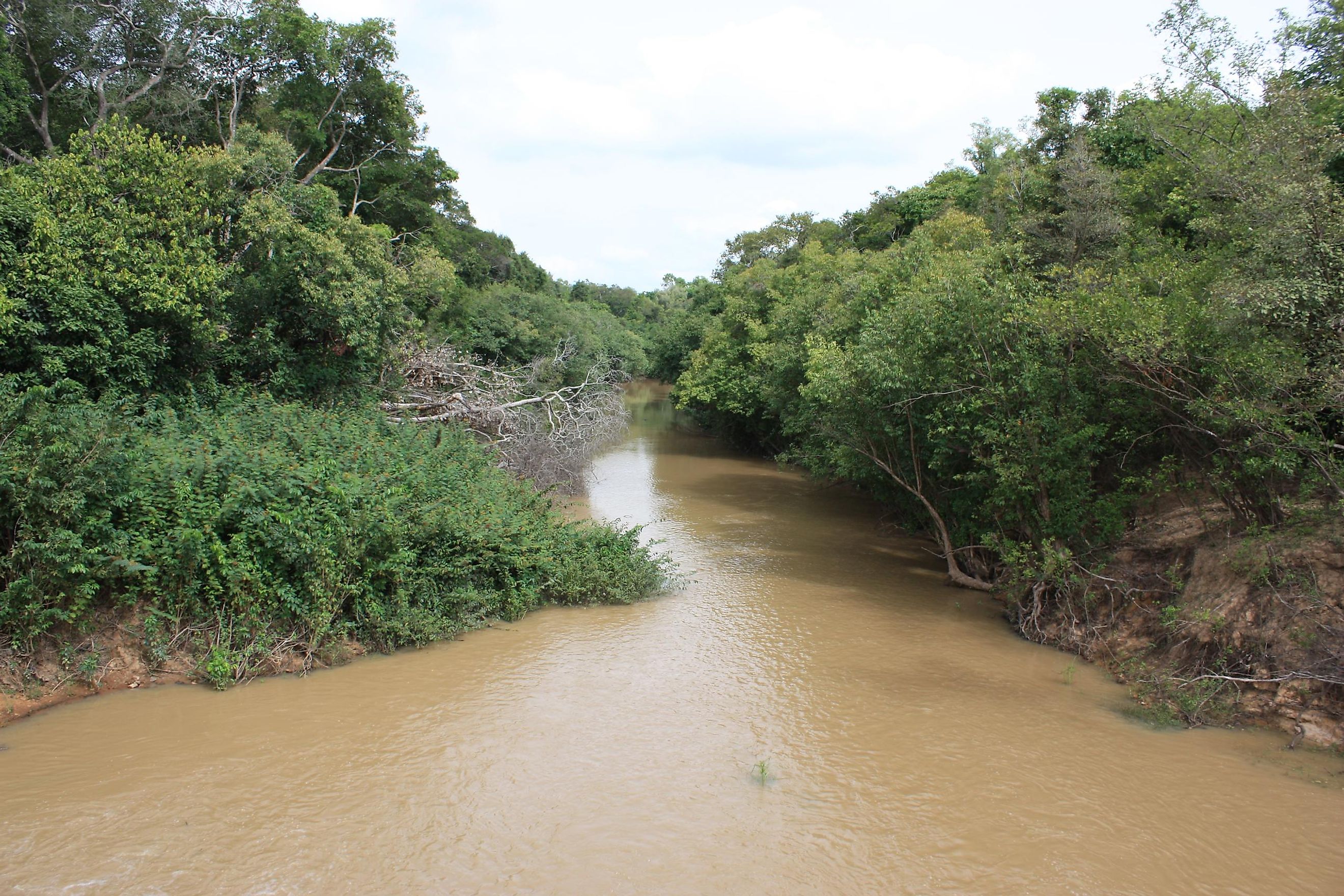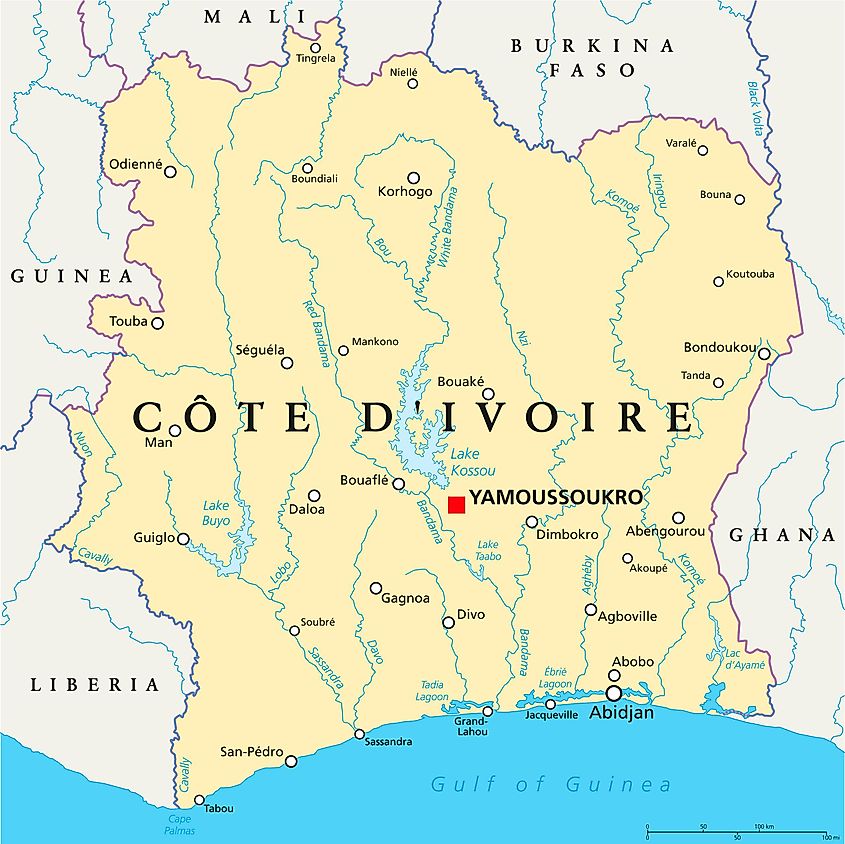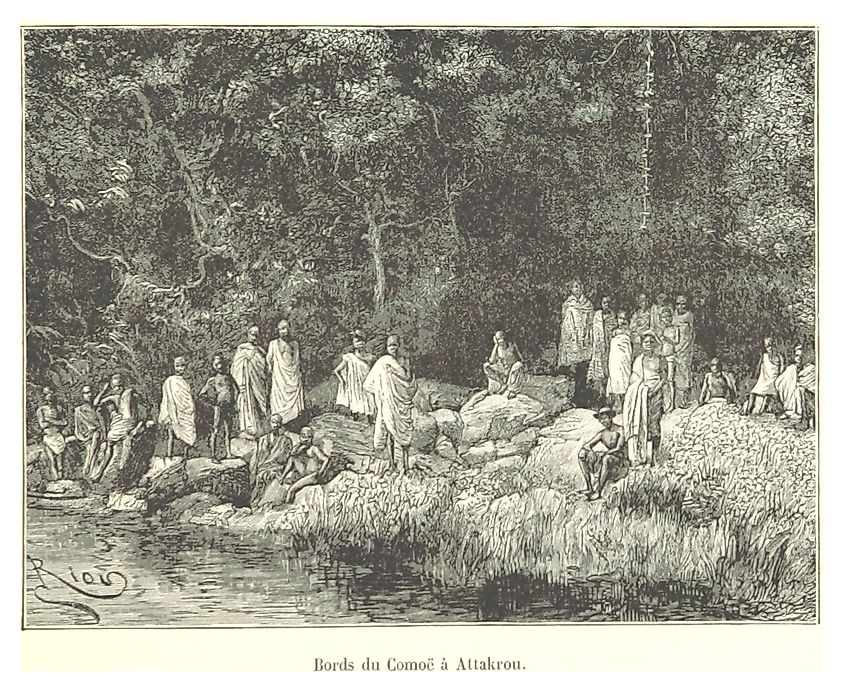
Komoe River
The 759-kilometer-long Komoé River forms part of the border between Burkina Faso and Ivory Coast in West Africa, stopping short before entering the Ivory Coast. It is a major drainage for the northeastern region of the Ivory Coast before merging with the Atlantic Ocean. As with many other African water sources, the Komoé River forms the backdrop of an African legend. The story goes that Queen Pokou headed a breakaway community during a conflict in West Africa. She led her group to the Komoé River, as they fled from their enemies, where she had to sacrifice her son to allow the people to cross.
After throwing her baby into the river, a bloat of hippopotamuses emerged from the depths. They formed a bridge for Queen Pokou and her people to reach the other side. In her despair, the queen called out "baouli" (meaning "the child is dead) when they set foot on dry land. It is believed that this is why her descendants are known as the Baoule people.
Course And Geography Of The Komoé River

The Komoé River starts on Burkina Faso's Sikasso Plateau and rises in the Sindou Hills as it flows south. Rippling terrains and rich agricultural land characterize this plateau region. From the plateau, the water winds its way over several falls, including the Chutes de la Komoé, before flowing through the Cascades de Karfiguela and ending up in the Atlantic. Throughout the Komoé River's course, the water touches the earth in Ivory Coast, Guinea, and Liberia.

Alongside the river, the landscape showcases the unmatched geology of West Africa. Here, the water witnesses vast plains and riparian forests, which paints an incredible picture of an otherwise largely ignored part of the world. A portion of the river flowing in the northeastern Ivory Coast feeds the vegetation to such a degree that the area (Comoé National Park) was named a UNESCO World Heritage Site. The park is also the largest protected region in all of West Africa, covering 11,500 square kilometers and stretching from the Guinea savanna to the Sudanian zone.
Climate And Ecology Of The Komoé River
The West African climate dictates the river's journey. Two main seasons influence the climate: rainy and dry. This affects the water flow and the ecology of the river basin. The basin boasts several rainforests and savannahs, which host many endemic and indigenous plant and animal species. The forests, in particular, are critical for wildlife to find food, shelter, and spaces for movement.
The mouth of the Komoé River is the site of semi-wild animal breeding, while the wetlands in the basin support a variety of bird species, amphibians, and aquatic plants. The riverbanks also play a specific role in protecting various species in the basin, by offering refuge to terrestrial animals. The incredible ecological diversity of the basin is the direct result of the climate variability of the Komoé River and the varying terrains it flows through.
Brief History Of The Komoé River

There aren't extensive records on the river's history, but the area has seen the rise and fall of several civilizations. The basin has also formed part of important trade routes and played a role in the socio-political evolution of West Africa. Explorers have used the river route to gain a deeper understanding of this part of the African continent. Settlers made it a focal point due to the ample agricultural land. Along with the legend of Queen Pokou, it is also the inspiration for several other historical narratives.
Human Settlements Along The Komoé River
The human history of the Komoé River is as fascinating as its ecology. For millennia, the water and riverbanks have sustained settlements that sprung up alongside it. The fertile ground helped propel agricultural efforts, and the water made long-distance trading possible. From the ancient Burkina Faso communities to the modern-day settlements in Ivory Coast, the river has enabled economic growth and bridged cultural divides.
As the world, including Africa, continues to grapple with the effects of ongoing climate change, scientists must keep studying and preserving rivers like Komoé. The river constantly reminds us how dependent we are on natural elements and the importance of coexisting without destroying and depleting.











